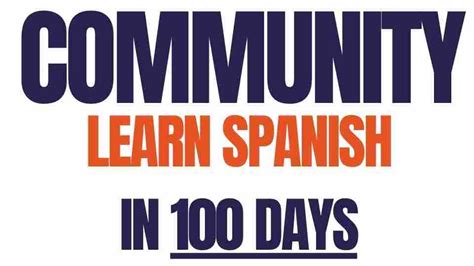Welcome to Week 2 of your university Spanish journey! This week’s lecture delves deeper into the captivating world of the Spanish language, equipping you with essential vocabulary, grammar concepts, and cultural insights.

The Basics of Spanish Pronunciation
Mastering Spanish pronunciation is crucial for effective communication. Remember the following key points:
- Vowels: Spanish vowels are pronounced clearly and distinctly. Pay attention to the accent marks, which indicate stressed syllables.
- Consonants: Many Spanish consonants sound similar to their English counterparts, but there are some notable differences. For example, “c” before “e” or “i” is pronounced like an “s,” and “j” is always pronounced as a “h.”
- Stress: Spanish words are typically stressed on the second-to-last syllable, except for words ending in “n” or “s,” which are stressed on the last syllable.
Vocabulary: Exploring the World Around You
Expand your Spanish vocabulary with these essential words and phrases:
- Greetings: Hola (hello), Buenos días (good morning), Buenas tardes (good afternoon), Buenas noches (good evening)
- Introductions: Me llamo (my name is), ¿Cómo te llamas? (what is your name?), Estoy bien (I am well)
- Daily Life: El libro (the book), La casa (the house), El coche (the car), La comida (the food)
Grammar: Laying the Foundation
Delve into the fundamentals of Spanish grammar with these key concepts:
- Nouns: Spanish nouns have two genders, masculine and feminine, and must agree with adjectives.
- Adjectives: Adjectives come after the noun they modify and agree in number and gender.
- Verbs: Spanish verbs have a regular conjugation pattern and can be conjugated in different tenses and moods.
Cultural Insights: A Glimpse into the Spanish-Speaking World
Spanish is spoken by over 570 million people around the globe, making it the second most widely spoken language. Explore the rich cultural tapestry of Spanish-speaking countries:
- Geography: Spanish is the official language of 20 countries, including Spain, Mexico, Argentina, and Colombia.
- Art and Literature: Spain has produced some of the world’s most renowned artists, such as Pablo Picasso and Salvador Dalí.
- Gastronomy: Spanish cuisine is renowned for its flavorful dishes, such as paella and tapas.
Tips and Tricks: Enhancing Your Learning
- Practice Regularly: The key to mastering any language is consistent practice. Dedicate time each day to practicing your Spanish skills.
- Immerse Yourself: Surround yourself with Spanish-language media, such as movies, music, and podcasts.
- Seek Help: Don’t hesitate to ask your professor or classmates for assistance if you need it.
Common Mistakes to Avoid: Navigating Language Pitfalls
- Mispronunciation: Be mindful of Spanish pronunciation rules to avoid misunderstandings.
- Gender Agreement: Ensure that nouns and adjectives agree in gender and number.
- Verb Conjugation: Familiarize yourself with verb conjugation patterns to use verbs correctly.
Conclusion
Week 2 of your university Spanish lecture has laid a solid foundation for your language journey. With a strong understanding of pronunciation, vocabulary, grammar, and cultural context, you are well-equipped to embark on the exciting adventure of learning Spanish. Remember to practice consistently, immerse yourself in the language, and seek guidance when needed. ¡Mucho éxito en tu viaje lingüístico! (Good luck on your language journey!)
Table 1: Spanish Pronunciation Guidelines
| Vowel | Pronunciation | Example |
|---|---|---|
| a | /a/ | casa (house) |
| e | /e/ | mesa (table) |
| i | /i/ | libro (book) |
| o | /o/ | coche (car) |
| u | /u/ | mundo (world) |
| y | /i/ | y (and) |
Table 2: Essential Spanish Vocabulary
| Category | Spanish Word | English Translation |
|---|---|---|
| Greetings | Hola | Hello |
| Introductions | Me llamo | My name is |
| Daily Life | La comida | The food |
| Transportation | El autobús | The bus |
| Shopping | La tienda | The store |
Table 3: Spanish Grammar Basics
| Concept | Description | Example |
|---|---|---|
| Nouns | Have gender (masculine or feminine) | La casa (the house) |
| Adjectives | Agree with nouns in number and gender | El libro grande (the big book) |
| Verbs | Conjugate in different tenses and moods | Hablo español (I speak Spanish) |
Table 4: Common Spanish Cultural Contributions
| Category | Contribution | Origin |
|---|---|---|
| Art | Pablo Picasso | Spain |
| Literature | Miguel de Cervantes | Spain |
| Music | Flamenco | Spain |
| Gastronomy | Paella | Spain |
